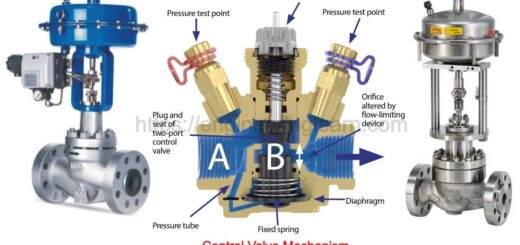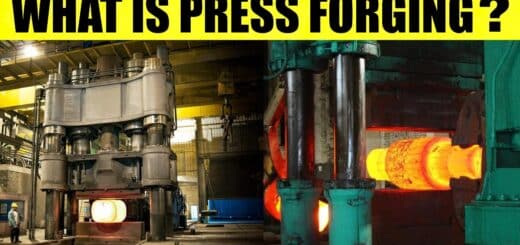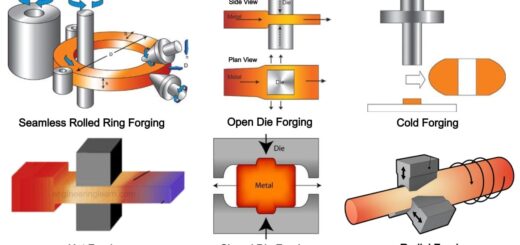Monorail Crane – Definition, Types, Components, Applications, Specification & Advantages [Complete Explained]
![Monorail Crane - Definition, Types, Components, Applications, Specification & Advantages [Complete Explained]](https://engineeringlearn.com/wp-content/uploads/2022/07/Monorail-Crane-1024x539.jpg)
What is a Monorail Crane?
Monorail Crane – Definition, Types, Components, Applications, Specification & Advantages: – A monorail crane is a typical kind of overhead crane comprising a single beam with a hoist. As a substitute for traditional cranes and transport lines, Monorail cranes are broadly utilized in applications requiring monotonous material or product development starting from one point and then onto the next within a restricted area. Running on a solitary stationary beam, monorail cranes are very simple in design and exceptionally financially savvy. Monorail cranes are popularly known as monorails.
Monorail cranes utilize a trolley that conveys a hoist. The trolley is associated with a beam into the ceiling structure to run along a flat surface. overhead Monorail cranes provide movements along two axes. All over development through the hoist and forward and in reverse development by means of the monorail beam. Monorail beams are for the most part subjected to gravity loads and are utilized both inside and outside.
Types of Monorail Crane
In light of the operating systems, there are two types of monorail overhead cranes. They are:
1. Manually monorail cranes
2. Electrically operated mechanized monorail cranes.
Contingent upon the movement way of the monorail cranes they are of two types:
1. Monorail cranes running on a straight path.
2. Monorail cranes running on a curved path.
Applications of Overhead Monorail Crane
Monorail overhead cranes are utilized in different industries or ventures including:
- Construction
- Automotive
- Oil and gas
- Chemicals
- Aircraft
- Food and beverage
- Metal processing
- Machinery and equipment
- Waste management
- Injection molding
- Pulp and paper
- Wood and wood products
- Ships and boats
- Rubber and plastics
- Warehouse loading docks
Monorail System Components
A monorail system consists of the following parts:
- Monorail beam
- Hoist
- Trolley
- Festoon
The hoist and trolley travel on the monorail beam, which is a single stationary beam supported by the ceiling or floor-mounted frame. Monorails are configured as under hung systems.
The trolley of the monorail system is usually a four-wheel type (eight wheels for heavier loads) that travels on the bottom flange of the monorail beam. They can be outfitted with pendant control electric lift and travel. Adjustable speed-type motor controller drive provides better flexibility.
Characteristic Features of Monorail Systems

- Monorail structures are normally made of Steel or Aluminum.
- In tightened or constricted workflow areas, the utilization of monorails is ideal.
- The capacity of monorails varies or differs from one manufacturer to another. For higher loads, steel structures are utilized. As a general rule, they can convey a load of up to 4000 lbs.
- Monorails are not difficult to install, move, and dismantle
- They have a long life.
Specification of Monorail Hoists
Despite the fact that the actual specification of monorail lifts changes from one organization to another, as a rule, the accompanying details ought to be mentioned: –
- Design code
- Lifting capacity
- Height of the lift
- Travel length
- Trolley type
- Hoist type
- Suspension type
- Application description
- Motion speed required
- Wheels type
- Motor details and types
- Gear and Bearing details
- Hook types and details
- Power supply
- Brake
- Control pane
Advantages of Monorail Crane
Utilizing an overhead monorail crane in any facility gives various advantages. some of the benefits of monorail cranes are mentioned below:
- Simple flexible operation.
- Easy load control in an efficient manner.
- Monorail cranes being installed overhead, will be above most deterrents during activity.
- Safe and solid usefulness and functionality.
- Maintenance cost is also low.
- Monorail cranes can be effectively customized according to the necessities of the product or material taken care of.
- Easy control utilizing mechanized frameworks from a single area or location.
- Decreased labour costs.
Monorail Cranes for Any Industry
Monorail Overhead cranes expand the upward space in a facility and transport loads starting from one process and then to the next. Monorail cranes can be used in production facilities for the accompanying ventures and more:-
- Aircraft
- Automotive
- Chemicals
- Construction
- Food and beverage
- Machinery and equipment
- Metal processing
- Pulp and paper
- Rubber and plastics
- Ships and boats
- Waste management
- Wood and wood products
Monorail Cranes – Opportunities & Considerations
Opportunity
Monorail cranes are the best production applications where materials are monotonously moved from one point then onto the next. The monorail hoist and trolley run on a solitary stationary beam a practical choice to bridge or gantry cranes for applications that require limited lifting capacity.
Examples incorporate gathering tasks, and transport of materials to workstations, and lines where parts are impacted, painted, or covered. Monorails likewise act as a material taking care of options in places that can’t oblige a bridge crane.
Considerations
Monorail cranes give just two axes of hook movement. up/down by means of the host and forward/back through the monorail beam. On the off chance that your application requires lateral movement, you’ll have to consider different choices, for example, a bridge or gantry crane.
Difference Between Hoist, Monorail, and Crane?
A) Hoist
A Hoist lift is one of the components/parts of the crane that have capabilities to climb/down. In view of the system and how it functions, this equipment has four types, in particular manual, water driven, hydraulic, and electric crane. The catchphrase is “up/down”.
B) Monorail
The monorail is a device that can make two movements, in an upward direction (up/down) on the X-axis and moves horizontally along the monorail beam. Assuming that an extra trolley is installed on the hoist so it can horizontally, it is known as a monorail hoist. Monorail beams can be acclimated to the area and turn in span utilizing an extraordinary trolley that can pivot following the monorail track. This allows making an interminable way or a persistent monorail framework. A monorail is generally used to move goods in production areas and underway regions that require consistent cycles like in the composition area. The catchphrase is “two movements”.
C) Crane
Cranes can make at least three movements. A crane can move up/down (hoisting), right/left (crossing), and forward/in reverse (traversing) or rotate in a radius on the X-axis. The crane has a hoist and trolley so it can move up/down and move to the right/left along the girder like in an overhead traveling crane or move along a boom like in a jib crane. For the crane to have the option to move ahead/in reverse, a pair of saddle or end carriages are added with the goal that the crane can move along the runway. There is a couple of bearings on the jib crane, added between the pillar and the boom so the crane can rotate up to 360 degrees.
What is a Single Beam Monorail Crane?
A Single beam monorail crane can take the vast majority of the floor space and mobility, which is regularly attached to the current rooftop structure – segments to help the crane runway are not required. The installation of independent steel superstructures makes the overhead monorail crane the best answer to be adaptable to production prerequisites.
Conclusion
Monorail cranes are an optimal answer for linear, overhead material handling because of the fact that they upgrade the production work process and make a completely safe work environment. Most commonly, monorails are utilized in production lines where production can be followed from natural substance consumption all the way to final packing stations.
Image Source: – munckcranes, cranesdq, pelloby













